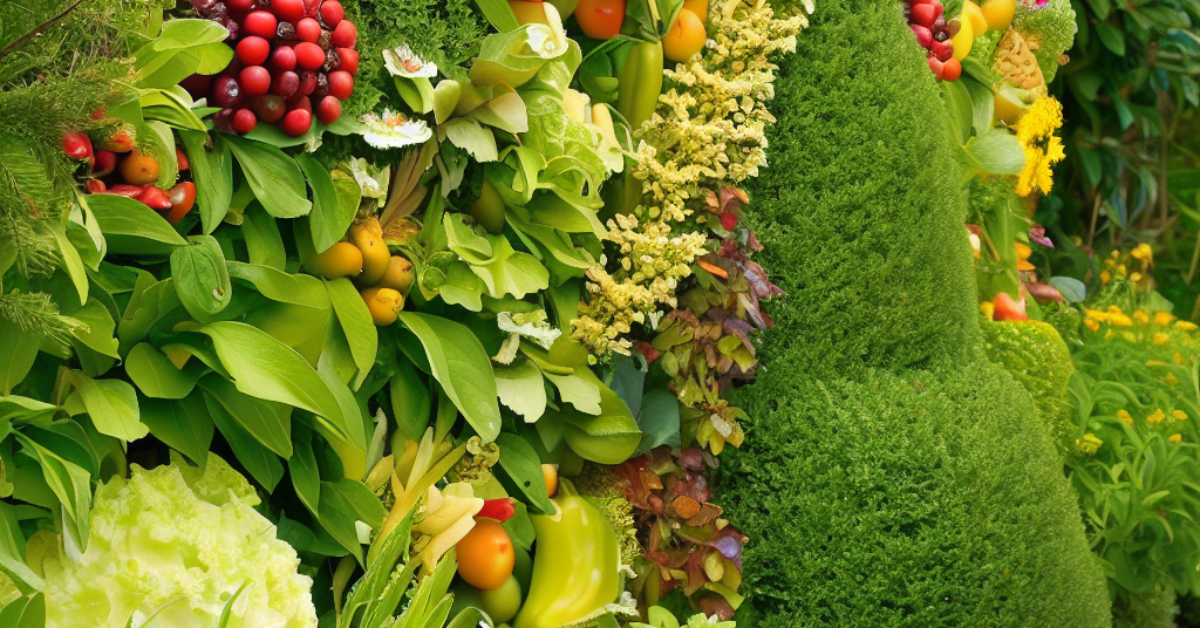Imagine a garden where lush, edible plants not only delight your taste buds but also provide privacy, beauty, and a thriving ecosystem. That’s the magic of food hedges. These living boundaries aren’t just about keeping nosy neighbors at bay; they’re a treasure trove of delectable delights and natural wonder. In this OrganicMotion article, we’ll show you how to create your own food hedge, turning your garden into a symphony of flavors and colors.
The Art of Food Hedges
A food hedge is a harmonious blend of aesthetics and function. It’s a living boundary made up of edible plants, such as fruit trees, berry bushes, and nut-bearing shrubs, artfully arranged to provide a bounty of food and a haven of beauty.
Choose Your Edibles
Start by selecting a variety of edible plants that thrive in your climate zone. Common choices include:
- Fruit Trees: Apple, pear, cherry, and plum trees.
- Berry Bushes: Raspberry, blackberry, blueberry, and currant bushes.
- Nut Trees: Hazelnuts, chestnuts, and almonds.
Mix and match based on your preferences and the conditions of your garden.
Layout and Design
Consider the layout of your food hedge. Will it border your property, provide privacy along a fence, or encircle your garden beds? Plan the arrangement so that each plant has enough space to grow and produce fruit.
Planting Basics
- Spacing: Follow the recommended spacing for each plant species to ensure proper growth and airflow.
- Sunlight: Most edible plants require full sun, so choose a location that receives at least 6-8 hours of sunlight per day.
- Soil Preparation: Prepare the soil by adding organic matter and compost to improve fertility and drainage.
Maintenance and Pruning
Regular maintenance is crucial for a thriving food hedge:
- Pruning: Prune your plants annually to encourage healthy growth and fruit production.
- Mulching: Apply mulch around the base of plants to retain moisture and suppress weeds.
- Watering: Keep plants well-watered, especially during dry spells.
- Fertilizing: Feed your edibles with organic fertilizers to boost growth.
Diversity is Key
Aim for diversity in your food hedge. Mix early and late fruiting varieties to extend your harvest season, and include pollinator-friendly plants like flowers and herbs to attract bees and butterflies.
Harvest and Enjoy
As your food hedge matures, enjoy a continuous harvest of fresh, organic produce right from your garden. Share the bounty with friends and neighbors, and get creative in the kitchen with delicious recipes.
Wildlife Habitat
Food hedges often attract beneficial wildlife like birds and pollinators. Encourage biodiversity by providing nesting boxes and insect-friendly plants.
Way of life
A food hedge is not just a garden feature; it’s a way of life. It transforms your outdoor space into an edible paradise, providing fresh, nutritious food and enhancing the beauty of your surroundings. With careful planning and maintenance, your food hedge will thrive, offering you a cornucopia of flavors and experiences. So, roll up your sleeves, get your hands in the soil, and start creating your own food hedge—a living testament to the joys of edible gardening. Happy planting!
